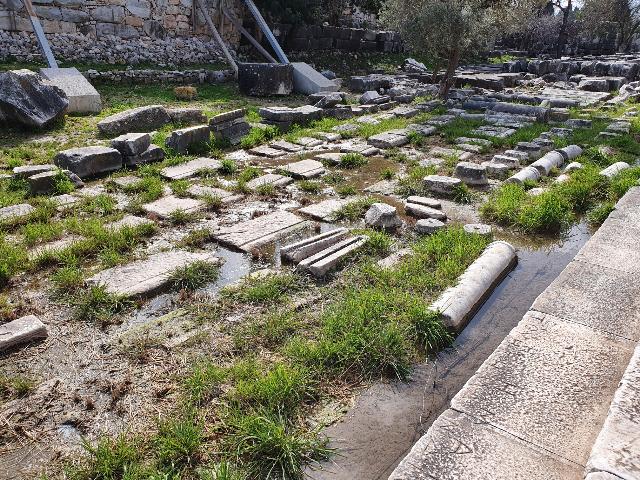Last week, I received welcome correspondence from the hydrologist responsible for redirecting the water falling into the southeast section of the Temple of Apollo sanctuary.
By Glenn Maffia
This pleased me immensely as there has been a deafening silence from this quarter for several months. Though, after I sent photographs as evidence for the waters now mingling within the archaeological remains of the Christian Basilica which once stood within the adyton (inner courtyard), Professor Helmut Brückner responded with admirable haste.
Reasons for the predicament
The professor reiterated that the water emanates from a fault in the karst rock which forms the Milesian Peninsula.
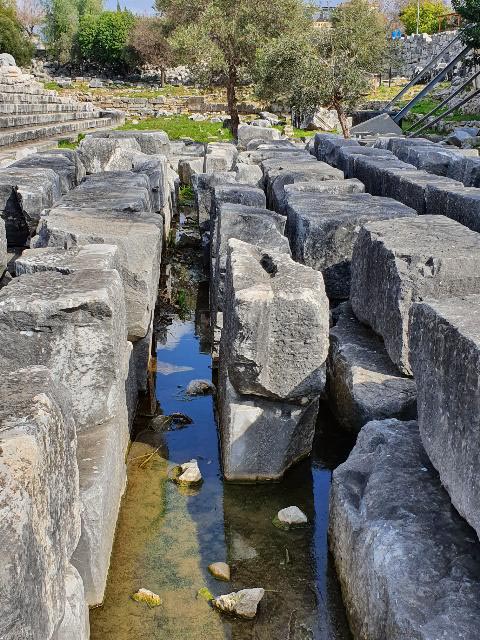
Water among the ruins
I was particularly pleased by his logic of the second possible cause. It is an obvious disregard of this exquisite site and especially from UKOME, the governmental department responsible for road/traffic management.
After all, there are other routes to circumvent the archaeological site and directly contradicts the vigorous campaign waged against the road’s temporary closure at the behest of archaeologists some years back.
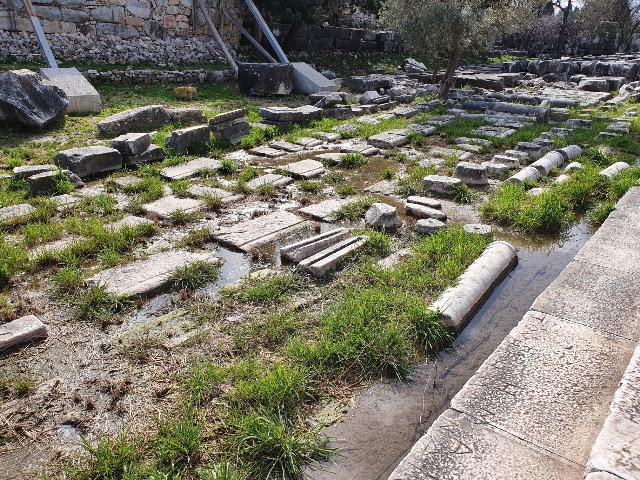
Worsening water flows around the Temple
I would like to reiterate my theory of the fracturing of the karst allowing the groundwater to seep into Apollo’s precinct.
I noticed during summer 2016 the area, now inundated, was then ‘spongy’ underfoot. The archaeologists were denied permission to excavate that year and, therefore, could not witness this unusual phenomena in the height of a blistering summer.
There is nothing more beneficial than being here on the ground to witness events at first hand. Though I missed the less severe earthquake of December 2015 (4.2 magnitude) as I was attending a meeting at the British Museum with the chief curator of Greek and Roman Antiquities.
It was only after experiencing the sodden ground that summer that I researched recent earthquakes. I believe this small earthquake initially fissured the karst rock and the large July 2017 quake merely accentuated the flow of water.
Solutions sought
Nonetheless, we are quite close in opinion as to the cause/s of the waters permanent influx into the Temple precinct.
I favour the natural fissure theory as the flow noticeably increases after heavy rainfall. The ‘road idea’ collapses during the summer months as vehicles increase and the water decreases. Though this could simply be that the groundwater has exhausted itself. I shall not quibble over that point.
But what is the remedy? Well, Professor Brückner plans to channel the water via a subsurface route away from the sodden area into a “dry well”.
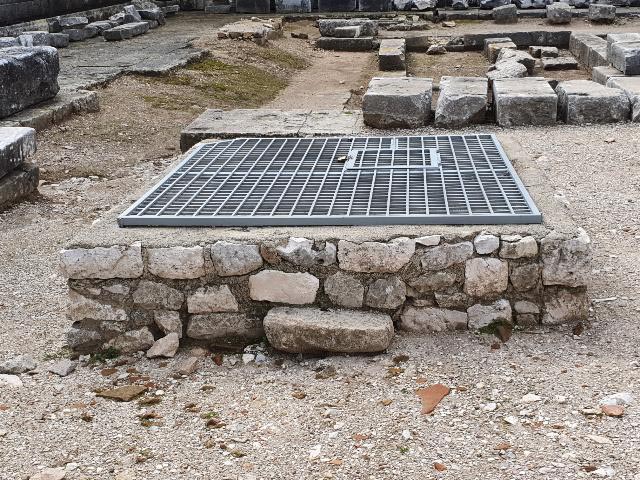
Dry Well: A solution?
The only dry well I can think of in that area is located in the adyton (inner sanctum). Though this shall be only a temporary solution, as the well shall eventually overflow the stone brim to inundate the inside of the Temple.
Hardly satisfactory. No doubt this valuable time would lead to a more permanent solution which has yet to be devised.
I have already pointed out to the Professor that there does exist an extant drainage system within the Hellenistic design of the building. He probably knows this already.
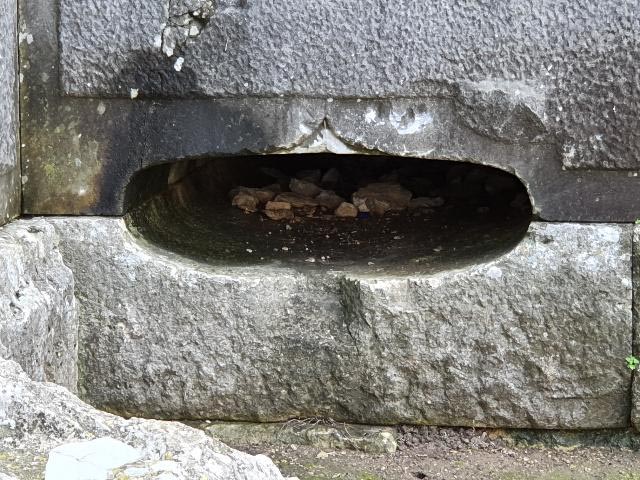
Could the Hellenistic drainage system be an option?
Where this drainage system releases the water is unknown to me, but it must, of course, be a low lying area. I rather wondered if this drainage system could be once again be employed?
The archaeologists would know this drainage’s course, for they sent down probes to map it years ago. Alternatively, they could channel this unwelcome water into the existing wastewater systems which must be in place for the present inhabitants of the surrounding village; these are normally cesspits.
I am certain the Professor will solve this current predicament probably in the most creative of ways.
No more shall we have to tiptoe around the edges of this magnificent ancient structure, nor use the priceless fragments of antiquity as stepping stones to bridge a morass.
